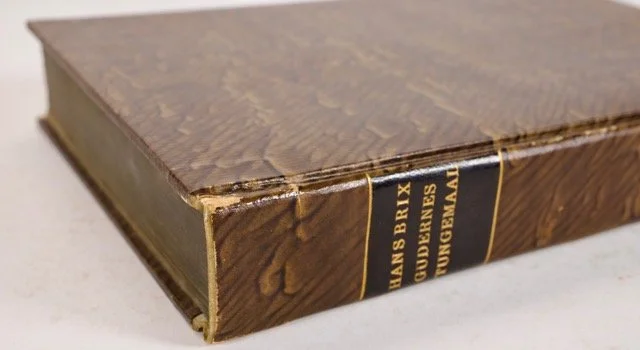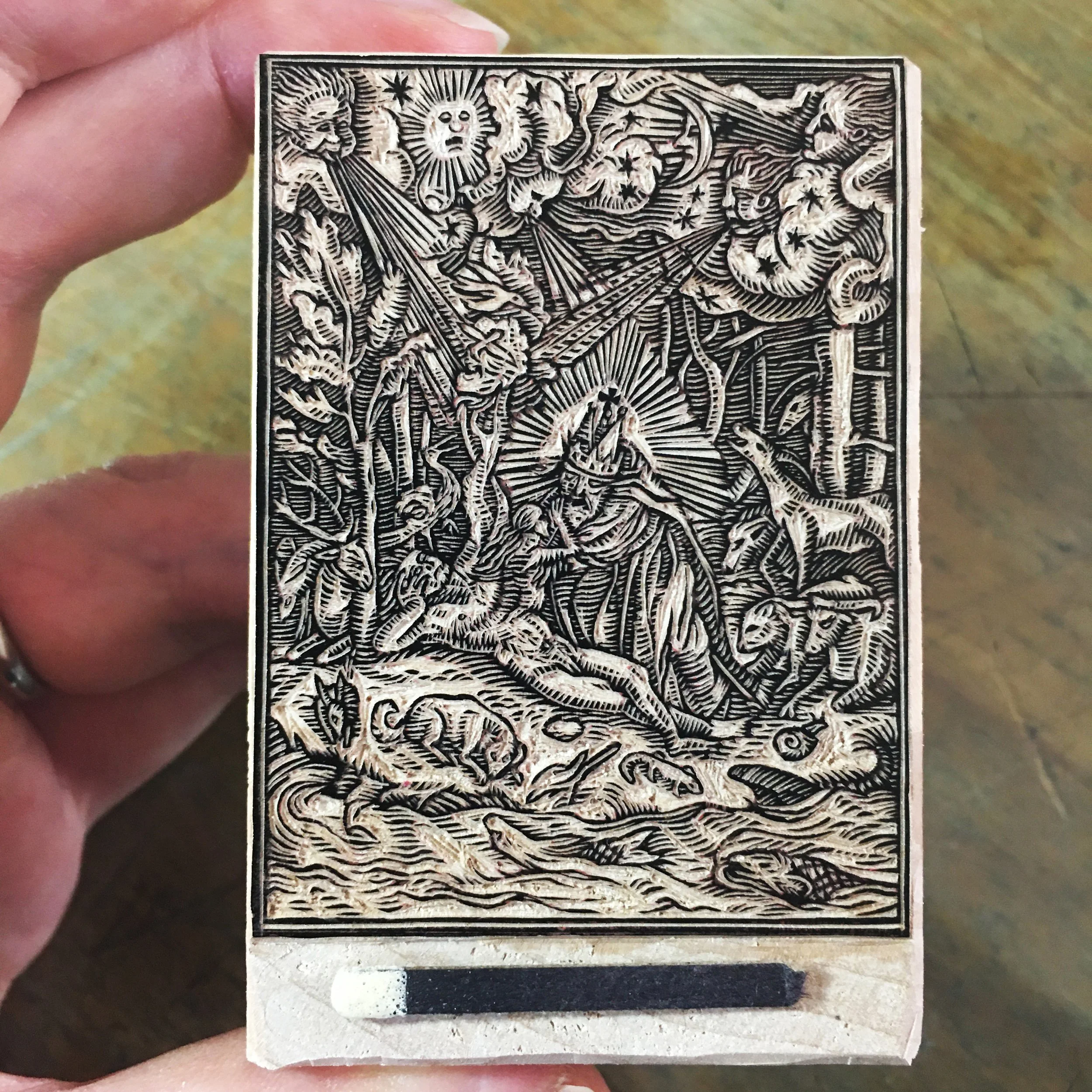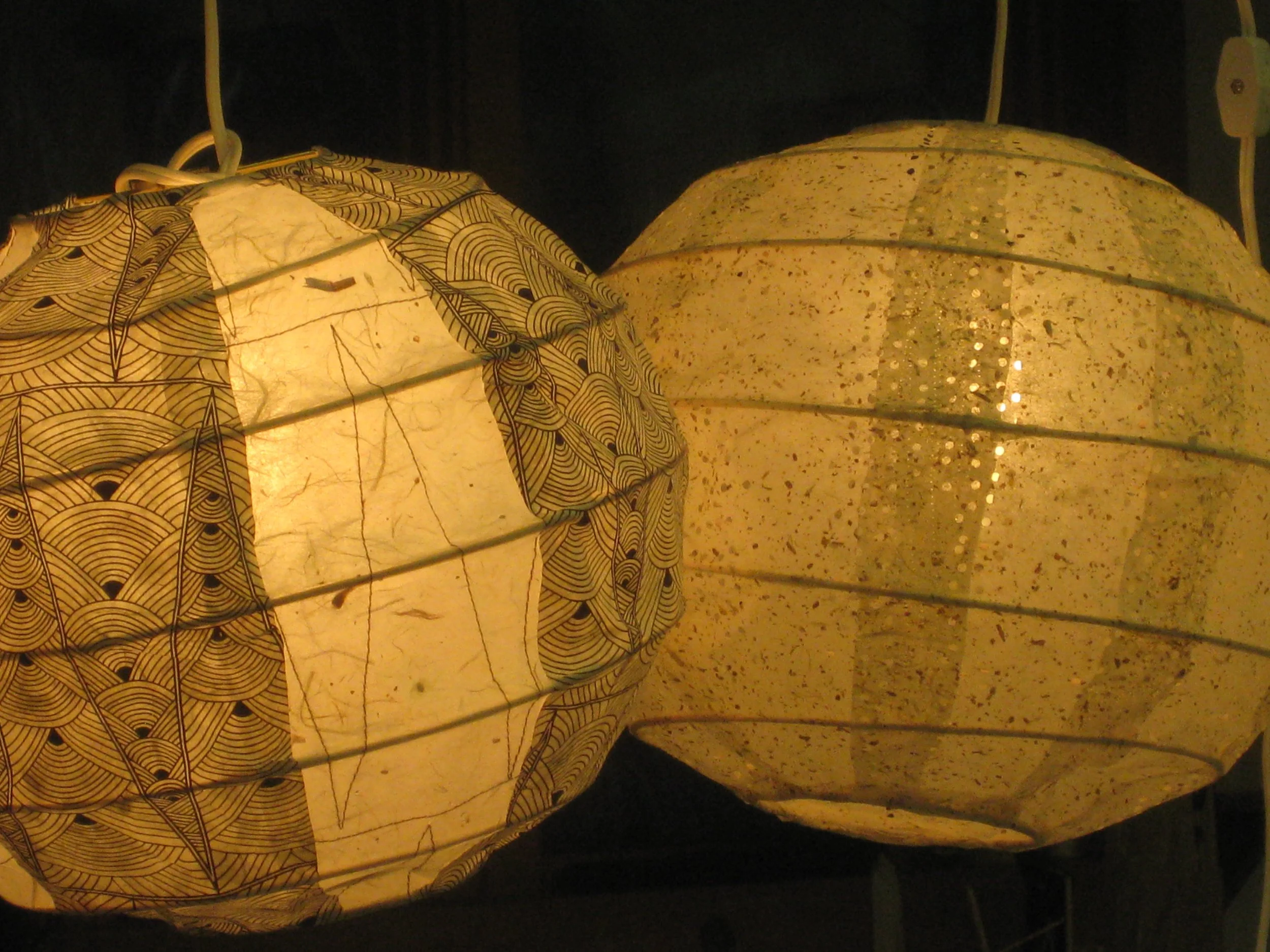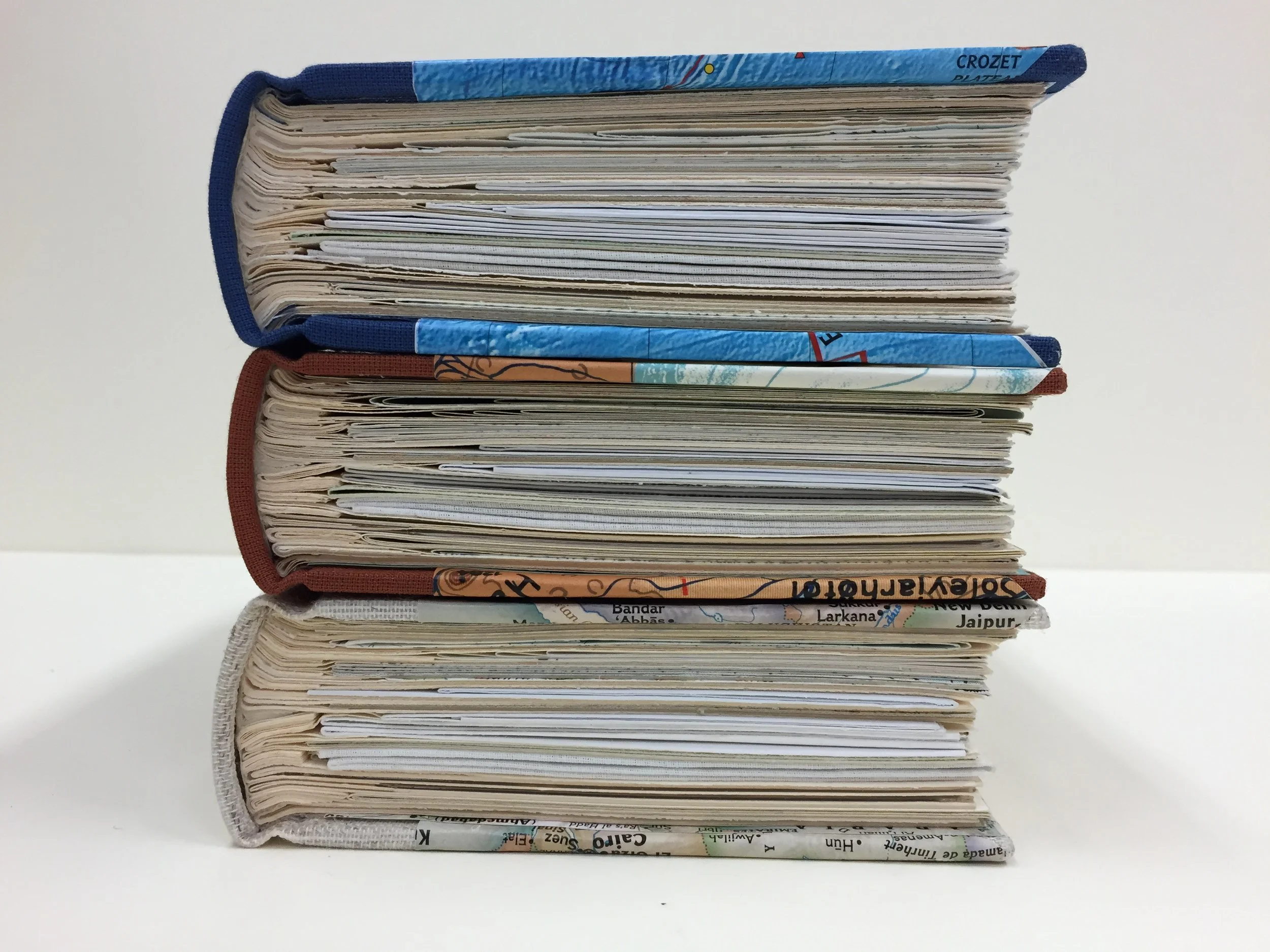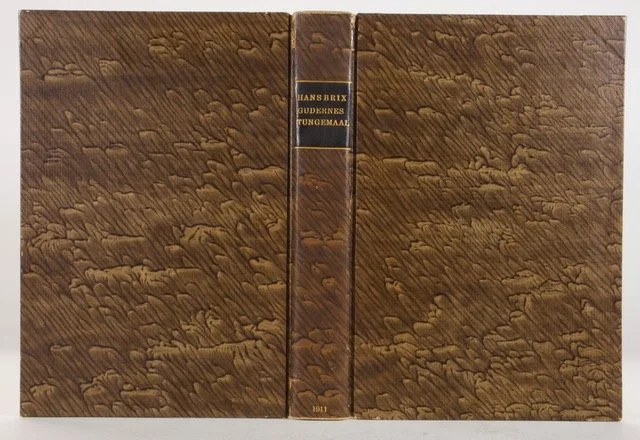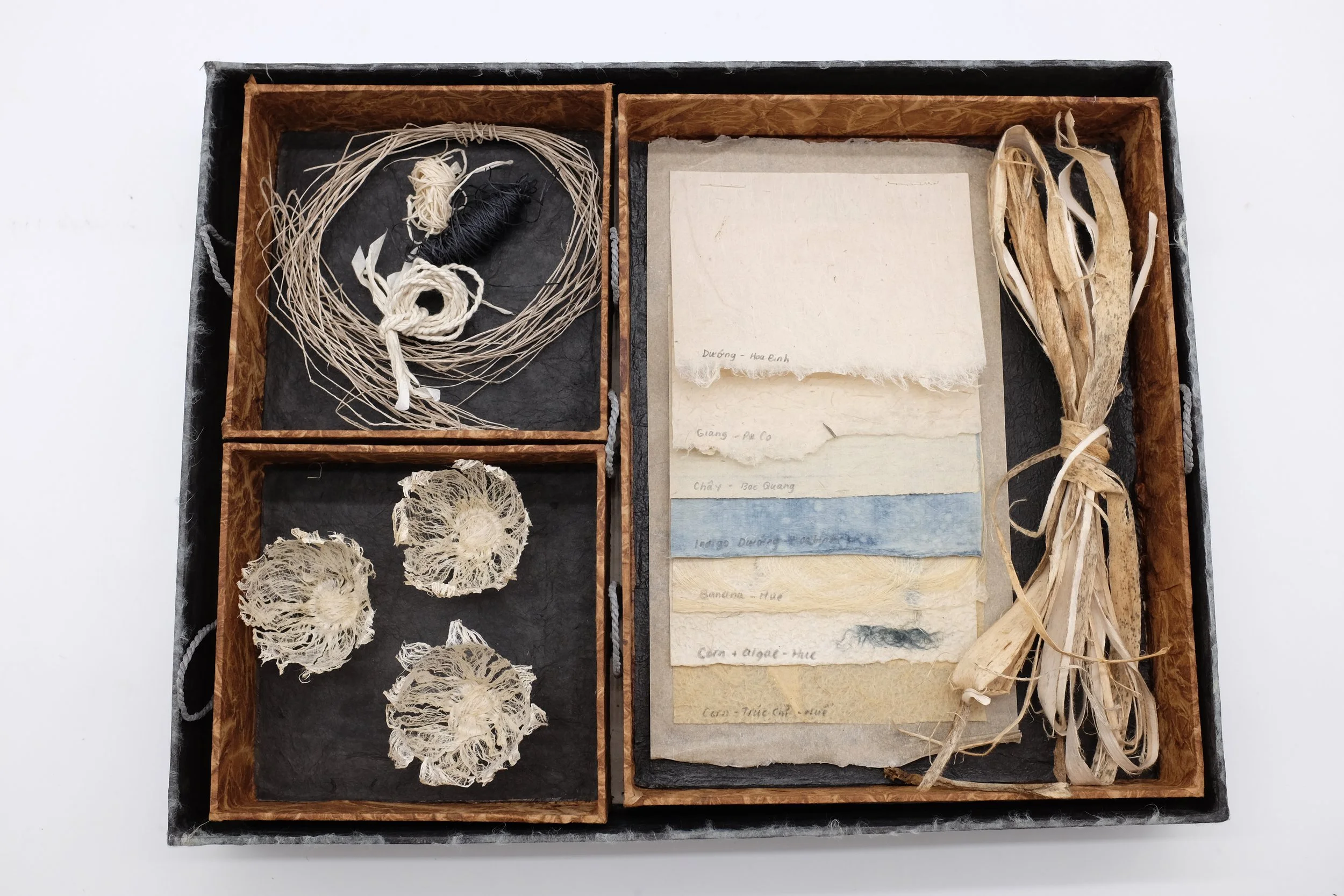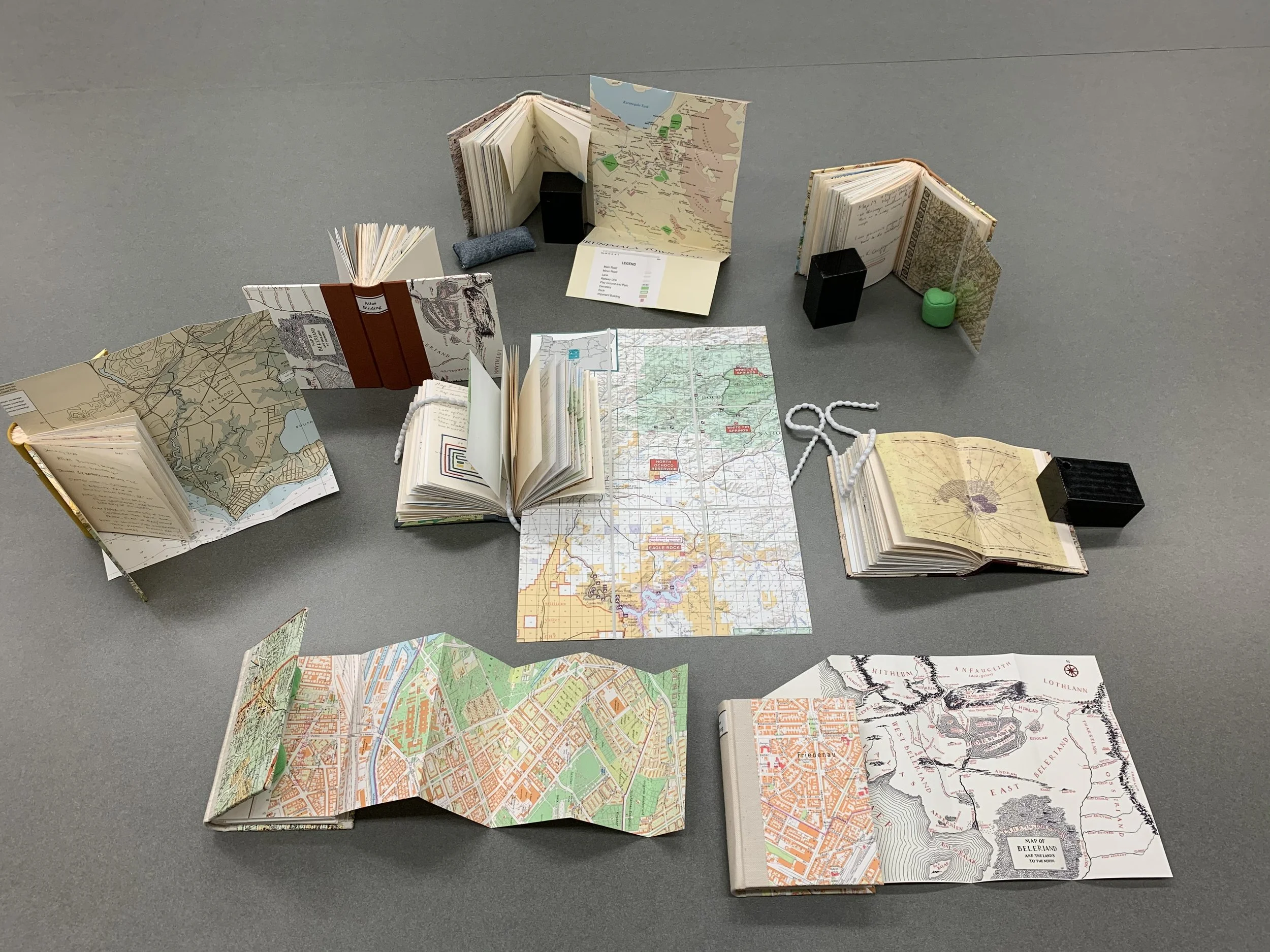
PBI 2025 Classes
The 2025 Class Supply List can be found HERE
PAPER AND BOOK INTENSIVE 2025
1
SESSION 1
-
In this course, students will make a version of the Danish paper binding devised by August Sandgren, one covered with paste papers, and consisting of reinforced vellum corners and vellum reinforcement at the head and tail. This binding was the first in the evolution of paper bindings that led next to the Rubow binding and eventually to what is called the Millimeter Binding. We will make our own paste papers as part of this project. This binding is more fun to make than the other two and more unusual as well. We’ll have examples of books bound by Sandgren as reference and inspiration!
-
Mark Andersson has been binding and repairing books since the late 1980s, which led him to study at North Bennet Street School (NBSS) in 1990. After graduation he worked at University of Washington repairing books while also taking on private work. He spent a year on a Fulbright in Sweden where he was first exposed to Danish paper bindings. A year after the Fulbright he returned to teach at NBSS for almost ten years. In 2007 he opened Panther Peak Bindery where he has taught, repaired books, and worked for private clients, federal, state and county offices. Lately he’s been collecting and researching Danish bindings and has written articles on them for The New Bookbinder and the Guild of Bookworkers Journal.
2
-
A book doesn’t come to life until it is in the hands of the reader. Held, opened, pages turned, books offer a haptic experience few other artworks do. Fiber artists have long understood how to combine the physical and visual experience. Quilts and blankets offer warmth alongside history, and embroidered samplers track family narratives like the births and deaths inscribed in the front cover of a bible.
In this workshop participants will explore the area where fibers and book arts overlap to create truly tactile books, exploring a variety of materials and making one-of-a-kind works that satisfy both the visual and sensual experience of the reader. We will begin with simple fabric dyeing techniques before moving into basic bindings like folded one-sheet books, pamphlet stitches, and Coptic stitches. We will address where to source materials, including how to repurpose old textiles into new works, and explore some of the techniques long used by seamstresses, quilters, and grandmothers to make their objects endure. We will conclude with image and text making techniques, including embroidery, applique, and painting to add content to our structures.
We will approach our time together in this class like a traditional quilting bee or sewing circle. Starting class with a demo or two, we will then sit together sharing knowledge, stories, and ideas while we craft our books. This often-portable work is perfect for working fireside in the evenings, or next to the Ox-Bow lagoon while you sunbathe.
-
Amanda D'Amico is a book artist working under the imprint Tiny Revolutionary Press in Philadelphia, PA. She was the Master Printer at the Borowsky Center for Publication Arts and taught in the MFA Book Arts/Printmaking Program at the University of the Arts for 13 years, as well as at Tyler School of Art at Temple University. She has taught workshops at the Free Library of Philadelphia, Pyramid Atlantic Art Center, Minnesota Center for Book Arts, Pickwick Independent Press, Haystack Mountain School of Crafts, and other institutions. She served on the Boards of the College Book Art Association, the Philadelphia Center for the Book and the Soapbox: Community Print Shop and Zine Library, where she is an artist member. D'Amico received her BA from Sarah Lawrence College and moved to Philadelphia to get her MFA in Book Arts and Printmaking from the University of the Arts. She grew up in the restaurant business in Minneapolis, both facts that influence her work. Her work has been collected and exhibited nationally.
3
-
Wood engraving is a relief printmaking process that involves carving into end grain hardwood, making it possible for an artist to create highly detailed images and tonally rich compositions. Used as the primary means for printing illustrations alongside moveable type from the late eighteenth century through most of the nineteenth century, wood engraving is still a great way to incorporate imagery into letterpress cards, book plates, printed ephemera, artist books, broadsides, and of course to develop graphic stand-alone images, especially when there is a need to work small.
Workshop participants will be guided through the entire process from transferring an image to the block, to engraving, to printing small editions. Participants will learn about types of wood used for engraving, care and sharpening of tools, safe use of printing equipment, ink mixing, and types of paper. Printing by hand as well as on a small proof press will be covered.
No previous engraving or printing experience is necessary, but patience, good eyesight, and a steady hand are very helpful.
-
Rebecca Gilbert is a Philadelphia-based artist whose work exemplifies a dedication to traditional printmaking processes.Representations of longing, mystery, and communication between the realms of the living and the dead are embedded throughout much of her work. She interprets these ideas in woodcut, wood engraving, etching, and letterpress as those processes allow the integration of a high level of detail.
Rebecca earned her MFA in Printmaking & Book Arts from The University of the Arts, and her BFA from Marshall University. She has extensive experience teaching printmaking and book arts at numerous institutions, including Wells Book Arts Center, Maryland Institute College of Art, and University of the Arts where she also served as the Coordinator of Drawing & Print Media. She is an active member and serves on the board of The Wood Engravers’ Network, and she is represented by The Print Center Gallery Store in Philadelphia.
Rebecca’s prints can be found in numerous public collections, including the Victoria & Albert Museum, Ashmolean Museum, Gregynog Hall Library, Zuckerman Museum of Art, St. Bride Foundation, the Free Library of Philadelphia Print and Picture Collection, and Princeton University Library’s Graphic Arts Collection. She maintains an active exhibition record, and has exhibited her work widely, including in galleries and museums in New York, California, Spain, Canada, Korea, Estonia, and England.
Among Rebecca’s most recent awards are an Independence Foundation Fellowship to support her current project, A Dance of Death in Two Parts; a Victor Hammer Fellowship from Wells College in Aurora, New York; an Illuminate the Arts; a Creative Research and Innovation Grant to support a research trip to England to study the history and practice of wood engraving; and a Winterthur Artist/Maker Fellowship.
Website: http://rebeccaprint.com/
Instagram: @rebecca_print
4
-
Working with elk bone, we’ll craft a traditional tool of the bookbinding trade—the bone folder. We’ll play with shape and ornament to move beyond a simple tool into the realm of the sculptural and adorned. With the help of approachable hand tools (such as rasps, files, and the jeweler’s saw) rough pieces will become smooth custom tools made to suit your individual needs, resulting in instruments of function and beauty. You will have the chance to cut, file, drill, and inscribe as means to add embellishment to your work. Students will create a small quiver of unique bone tools and a leather tool pouch to house them for transport and will leave with the skills to alter and repair any bonefolder that crosses their path.
Note: We’ll be working with bone from elk killed in the wild. This material would otherwise be wasted and thrown away, but it is an animal product nonetheless. There is no vegan alternative available for this workshop
-
Shanna Leino is a studio artist whose love of bookbinding led her to toolmaking. Shanna designs and manufactures a small line of hand tools and studio accessories for bookbinders and craftspeople, enjoys making artist’s books, and travels throughout the U.S. and occasionally abroad teaching book and tool making workshops. Previous teaching adventures: Penland School of Craft, University of Iowa Center for the Book, Minnesota Center for Book Arts, Boston University, The Morgan Conservancy, Center for Book Arts, University of Georgia, Cortona, Italy.
Shanna cannot wait to return to the shores of Lake Michigan, where she lived for a bunch of years before recently returning to her home state of New Hampshire.
5
-
For centuries, traditional Vietnamese papermaking communities across the country have depended on various plant materials local to their region for making paper. Plants including paper mulberry, perennial shrubs, and bamboo were used in making paper for spiritual and mundane use. In this workshop, we will learn traditional Vietnamese papermaking techniques using the liềm seo (bamboo woven screen) and khung seo (two-part bamboo frame) to make paper. We will experiment with making papers out of locally collected plant fibers around the Oxbow area as well as paper mulberry grown in North America to conduct comparisons in fiber length, sheen, and strength in sheet formation. We may also have the opportunity to work with dó plant fibers grown in Viet Nam. Working in various sizes—9’’ x 12’’, 12’’ x 18’’, and 20’’ x 30’’—everyone will have a chance to build their own unique library sample of papers. Instruction will cover fiber preparation, hand beating, sheet formation, pressing, drying using traditional equipment, and demos of bark manipulation like bark lace and making thread. Expect to gain knowledge on traditional Vietnamese papermaking techniques and its history to craft related artforms while also expanding your own papermaking studio practice.
-
Veronica Pham works primarily in papermaking and fiber arts in her studio practice. Her work focuses on traditional craft specific to Vietnamese and Chinese histories. The materials in her work often become environmental investigations about local ecology and place. Pham continues to work with traditional and contemporary papermakers in Vietnam with a focus on collaborative projects and research. Pham received her MFA from the University of Wisconsin-Madison and currently teaches art and design at the University of Vermont in the community engagement and visual communication field. Pham has taught papermaking and fiber arts workshops at the Minnesota Center for the Book, Chazen Arts Museum, Fresh Press Paper, and the Southeast Asian Summer Institute, and will teach at Penland School of Craft in 2025. Her work has been exhibited nationally and internationally. One of her favorite things is incorporating local hemp into her studio practice and exploring its endless possibilities as a fiber.
6
SESSION 2
-
In this workshop, students will learn to make Japanese lanterns (chochin) and consider the creative possibilities the techniques inspire. The process is based on creating collapsible armatures with wound reeds that are covered with paper. We will go over fiber processing (cooking and beating kozo fiber by hand) and utilize European and Japanese-style sheet forming tools and techniques. Participants will make kozo sheets that will be used to cover small lantern forms and embed wire and string between sheets of abaca to create bendable papers that can be manipulated into unique lanterns or sculptural pieces. As a class, we will also use a 4’x8’ mould to form a large sheet of paper which will be wrapped around an armature, resulting in an 8’ tall lantern.
PowerPoint presentations by Barrett and Hiebert will include traditional Japanese pocket lantern restoration and the design and construction of a large, illuminated sculpture. We will conclude with a mini exhibition of work created during the workshop and a group discussion.
-
Timothy Barrett is professor emeritus in the University of Iowa Center for the Book and the School of Library and Information Science. Following a Fulbright Fellowship studying papermaking in Japan, his research on early European handmade papers was funded by the NEA, the Kress Foundation, the Institute for Museum and Library Services and a MacArthur Fellowship. His primary research interests have been Japanese papermaking, early European papermaking technology, the role of gelatin in paper permanence, and aesthetics in handmade paper. Barrett is author of three books, one website, eight videos, and thirty-six articles or book chapters on the history, technique, science, and aesthetics of hand papermaking. Barrett retired as the director and paper specialist at the University of Iowa Center for the Book in 2020. Since then, he has been restoring antique Japanese travel lanterns, assisting in the transfer of his and other paper collections to UI Special Collections, and advising students and colleagues on paper related matters.
Helen Hiebert is a Colorado artist who constructs installations, sculptures, films, artists’ books and works in paper using handmade paper as her primary medium. She teaches, lectures and exhibits her work internationally and online, and is the author of the several how-to books about papermaking and papercrafts. Helen has an extensive network of paper colleagues around the world, and her interest in how things are made (from paper) keeps her up to date on current paper trends, which she writes about in her weekly blog called The Sunday Paper. She interviews papermakers and paper artists on her podcast Paper Talk, and she holds an annual paper retreat and papermaking master classes in her Red Cliff studio.
7
-
Working on and off the press, students will make small print editions consisting of stenciled imagery and hand set type. We will create a series of stencils that can be tightly registered and re-used. When combined, these stencils can result in complex, nuanced, and consistently editioned images. This technique is perfect for home studios as it makes use of simple tools and requires no heavy equipment. Using this process, we will also explore creating repeatable, multi-color patterns ideal for endsheets and book covers.
While producing our stencils and editioning the prints, we will engage in discussions focused on the intersection of text and imagery. Through short readings and writing prompts, we will investigate how text emphasizes, deepens, or alters the meaning and impact of an image. Students will be guided through the process of hand-setting language in lead type, and will letterpress print the type on a Vandercook press, experimenting with positioning, orientation, and curvature of type in relation to our images. Students will leave with an exchange portfolio consisting of the results of our investigations.
-
Sarah Bryant has produced artist books and prints since 2006. Her work can be found in dozens of libraries and private collections in the United States and abroad, including The Whitney Museum of American Art, The Library of Congress, The New York Public Library, and The Thomas J Watson Library at The Metropolitan Museum of Art. Bryant frequently collaborates with other artists as well as people in other disciplines, including composers, ecologists, performers, educators, and others. In 2013 she co-founded Shift-lab, a collective of five artists living across the United States who collaborate on book projects. She is currently an Associate Professor for the MFA Book Arts Program at The University of Alabama in Tuscaloosa. More information and images of work can be found at BigJumpPress.com.
8
-
*This class has an additional $60 studio fee*
In this workshop we will explore the Greek manuscript by binding a book model based on a specific exemplar in the collection of the University of Michigan Library. In any tradition there are similarities, variations, and outliers. The collection of Greek manuscripts at the University of Michigan is no exception. When examining a collection of manuscripts, differences become apparent, and patterns emerge. Manuscripts with a common origin may have similar decoration or board attachment styles while those from other locations might be completely different. With this in mind, we will focus on the uniqueness of one manuscript while discussing the common and divergent characteristics of Greek bindings more broadly.
Participants will learn about link stitch (biaxial) sewing, preparing wooden boards, board attachment, Greek endband construction, covering in leather, basic metal working, and blind tooling.
-
Kyle Clark is a bookbinder, artist, conservation technician, and lecturer working at the University of Michigan, Ann Arbor, Michigan. Bookbinding and its associated crafts have served as a jumping off point for research, discovery, and creativity within Kyle’s career. He has had the opportunity to study the bindings of Greek manuscripts in the collection of the University of Michigan Library as well as the Carolina Rediviva, Uppsala University Library in Uppsala, Sweden. His experimental research regarding Greek bindings at the University of Michigan has been published in Tradition and individuality: Bindings from the University of Michigan Greek Manuscript Collection by Julia Miller (Ann Arbor, MI, The Legacy Press, 2021). Kyle has also conducted research examining the current climate of bookbinding education within American degree and diploma awarding institutions, publication forthcoming.
Kyle holds an MFA in book arts, an MLIS from the University of Alabama, and a BS in Art Education from the University of North Georgia. In addition to his research interests, Kyle maintains an artistic practice encompassing the production of artists’ books, design bindings, and sculptural book works.
9
-
In this course, students will learn to create visual narratives using cut paper. We will make two-dimensional compositions, multi-layered assemblages, and three-dimensional, movable book structures. Our focus will be on the artistic and expressive potential of cut paper and its unique suitability to visual storytelling. Students will be encouraged to treat form and content as an interdependent whole, as they envision their projects. Cut paper has a rich history across cultures and traditions, with forms ranging from devotional and decorative to folk art and shadow puppetry. Contemporary artists infuse their own unique vision into the medium, further broadening its expressive potential. Paper cutting has been used in contemporary artists books, illustrations, art installations, sculpture, fashion, and permanent public art.
One thing I love about paper cutting is its accessibility. Paper is ubiquitous, can be inexpensive and cutting it only requires basic tools: a pair of sharp scissors or a utility knife. One does not need to be an accomplished draftsperson to make powerfully expressive paper cuts. This course will cover various compositional approaches, materials, tools and modes of assembly. Playful prompts, folk tales, poems, song lyrics, and personal narratives will help spark the imagination.
-
Andrea Dezsö is a visual artist who works across a broad range of media: drawing, painting, artist’s books, cut paper, embroidery, sculpture, printmaking, installation, and large-scale public art. Dezsö's permanent public art has been installed in three New York City subway stations, at CUNY Fiterman Hall in Lower Manhattan and at the US Embassy in Bucharest, Romania. Community Garden, Dezsö's colorful glass mosaic that winds through the Bedford Park Boulevard subway station in New York City, was recognized as Best American Public Art in 2007 by Americans for the Arts. Dezsö exhibits in museums and galleries around the world, and teaches widely. Dezsö is Professor at the Rhode Island School of Design.
10
-
Workshop participants will construct a bound book with a variety of map folding patterns, attachment techniques, and compensation methods. The workshop focuses on foldouts, fitting big things into small bindings, and guarded structures. The result is meant to be a reference source of options, with notes about advantages and disadvantages of each method. It is grounded in the instructor's work as a book conservator and her observations about historical atlas structures. Although not a class in conservation, we will discuss some techniques for repairing or rebinding books with foldouts, and we will discuss the advantages and disadvantages of the various methods we use. The resulting binding can also be a sourcebook of ideas for book artists interested in incorporating foldouts into creative structures.
-
Katherine S. Kelly is a book conservator at the Library of Congress in Washington, D.C. Her work there is focused on the treatment of rare books and bound manuscripts, largely from the Geography and Map Division and the Music Division. In addition to her interest in atlases and foldouts, she also researches early American journals and the use of brain-tanned skins in bookbinding.
